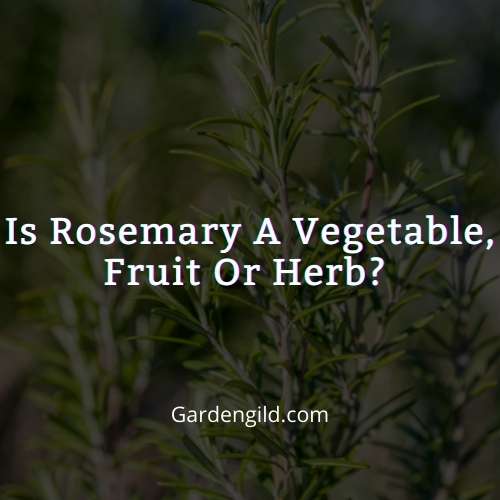If you want to start gardening and can not get an idea of plant which plant. Then which flowering plant is more evident, the rosemary. An easy to harvest and less time taking flowering plant with many nutritional values is rosemary.
Rosemary is a Mediterranean evergreen herb with a sweet scent. It’s used in cooking as a perfume ingredient and has potential health advantages. Like oregano, thyme, basil, and lavender, rosemary belongs to the mint family Lamiaceae, including oregano, thyme, basil, and lavender.
Do you have any fresh rosemary that needs to be used up?
This earthy, evergreen-scented herb will elevate all of your dishes. It goes well with potatoes, is delicious in bread, and gives roasted veggies a rich flavor.
You may use a light hand because it’s so powerful! You can even use it as a bread dip by chopping it up and mixing it with olive oil and sea salt. The less complicated, the better!
Rosemary can be used as many things. If you want to know more about it, stay with us until the end.
In this garden gild guide we’ll discuss the following:
- Is rosemary a Vegetable, Fruit or herb?
- Is lavender and rosemary related?
- Can I use rosemary from my yard for cooking?
- How to cultivate rosemary in my yard?
- What are the conditions of growing rosemary on my lawn?
- Is rosemary a sage?
- FAQs

Is rosemary a Vegetable, Fruit or herb?
Rosemary is a pine-scented plant that grows into a tiny shrub that can reach a height of four feet in optimal conditions. The plant produces one-inch long flat needle-like leaves with a silver-grey shine on the underside.
Rosmarinus officinalis is the botanical name for rosemary, an evergreen herb. Rosemary is grown for various functions, including culinary, fragrant, and medicinal.
Herbs are physically, biochemically, and nutritionally comparable to leafy greens like lettuce, spinach, and kale since they are plants like vegetables.
Other fresh herbs (mint, lavender, rosemary) can be used in drinks and as toppings on snacks and desserts in lesser amounts but more regularly.
Is lavender and rosemary related?
Lavender and rosemary are both members of the Lamiaceae family, part of the Aster family (daisies). The square stems with simple leaves classify them as part of this group.
Rosemary and lavender are two popular kitchen herbs with powerful scents and flavors. However, you would not be the first individual to mix these well-known herbs. They have similar looks and are members of the same plant family.
Lavender, Lavendula (Lavendula spp) looks and smells like rosemary, with its spiky blue blooms and pale silvery-green leaves. However, despite their close resemblance, lavender’s aroma is frequently more flowery and fragrant than rosemary’s.
The leaves of rosemary (Salvia Rosmarinus), a tiny evergreen plant in the mint family (Lamiaceae), are used to flavour meals. Rosemary is a Mediterranean plant spread throughout most of Europe and is often grown in gardens in hotter climes.
Can I use rosemary from my yard for cooking?
You can cook with R. Officinalis, but upright varieties with broader leaves have more aromatic oil. Many cooks prefer ‘Tuscan Blue,’ while ‘Blue Spires’ and ‘Miss Jessup’s Upright’ are also good.
The majority of rosemary types are grown for landscaping rather than cookery. However, these landscape types can also be employed in the kitchen. On the other hand, cooking variations are usually upright and have a higher oil content.
Fresh rosemary is the easiest to use because the leaves are delicate and supple. It’s simple to keep rosemary’s, but drying it causes the leaves to become hard and woody. A rosemary stem can be dried by just leaving it on the counter, but a food dehydrator is necessary to ensure safety and quality.
Most rosemary variations are grown for ornamental purposes rather than culinary use. These landscape other hands can bhandsed in the kitchen. On the other hand, cooking variations are often upright and contain more oil.
You can utilize all of the rosemary herbs in your cuisine. This variety’s leaves are broad and aromatic, making them ideal for use on the grill.
How to cultivate rosemary in my yard?
Rosemary grows well in containers outside, especially in an easterly location with full sun till midday. If your container is exposed to the sun all day, be sure it is large enough to avoid drying out. One part sterilized soil, peat moss, and one part perlite make up a suitable potting soil.

Rosemary can be grown from seed, however, germination rates are typically low, and seedlings grow slowly. As a result, starting new rosemary plants from cuttings obtained from established plants is highly advised.
In ideal conditions, cuttings develop swiftly and should be ready for outdoor planting in approximately 8 weeks. Plant the seeds or cuttings indoors 8 to 10 weeks before the final spring frost to get a head start.
Seeds/cuttings should be planted in well-drained soil. For optimal development, the soil temperature should be around 70°F (21°C).
To keep your rosemary plant happy and healthy, never cut more than 1/3 of the plant off at a time. Instead, cut off the top 2 to 3 inches of the stem with sharp and sterile scissors or garden shears, leaving the rest of the stem’s length to encourage it to come back fast and healthy.
What are the conditions of growing rosemary on my lawn?
Rosemary is a woody-stemmed shrub with needle-like leaves that can grow up to 3 feet tall, and in warmer regions, up to 5 feet tall if not cut.
The majority of cultivars thrive on well-drained, loamy, acidic soil. The ideal pH for soil is between 6.0 and 7.0. To thrive, rosemary needs at least 6 hours of direct sunlight per day; it thrives in full sun.
Choose a location that will not be disturbed by tilling if you want to grow rosemary as a perennial.
Rosemary is a simple plant to care for. When growing them, provide rosemary plants with well-drained, sandy soil and at least six to eight hours of sunlight. These plants like warm, humid habitats and cannot withstand harsh cold.
Because rosemary can’t handle temperatures below 30 degrees Fahrenheit, it’s best to plant it in the spring.
Rosemary is a Mediterranean plant that grows well in a sunny, protected place with well-drained soil. It has a hard time growing in heavy clay soils, especially in the winter when the ground is moist.
Is rosemary a sage?
The rosemary is not specifically a sage plant. But it has been declared as a sage plant because rosemary is not a separate plant of species.
The Royal Horticultural Society (RHS) has declared that rosemary is not a separate plant species but rather a sage and that gardeners should modify their plant labels accordingly. The RHS will replace the scientific name after studies revealed that rosemary is actually salvia or sage.
Because genetic technology can better identify its relatives, the popular evergreen shrub and herb rosemary have lately undergone a nomenclature change. The RHS Nomenclature and Taxonomy Advisory Group approved the move to include Rosmarinus in the genus Salvia at a meeting in 2019.
people also ask
1. Is there a Rosemary that you can not eat?
The common rosemary plant (Rosmarinus officinalis) is prized for its lovely spring blossoms, hardiness, and adaptability. Rosemary has been crossbred to create a variety of varieties.
All types of rosemary are edible since common rosemary is, but they differ somewhat in flavor and growth patterns. Plants that grow as perennials in USDA plant hardiness zones 8 through 10 are rosemary.
2. Can rosemary be poisonous?
If consumed, rosemary oil can be poisonous; thus it should never be taken orally.
Pregnant and lactating women should avoid taking rosemary supplements since larger dosages can cause miscarriage. It is, nevertheless, safe to use as a spice in meals.
However, rosemary should not be taken by people with high blood pressure, ulcers, Crohn’s disease, or ulcerative colitis.
Read Also:
Conclusion
When eaten in recommended dosages, rosemary is generally regarded as safe. However, allergic responses have been reported on occasion.
In addition, large amounts of rosemary leaves can induce dangerous side effects, such as vomiting, spasms, coma, and, in some circumstances, pulmonary edema, due to their volatile oil concentration (fluid in the lungs).
If you liked the article, make sure to share this article with your friends and family.
